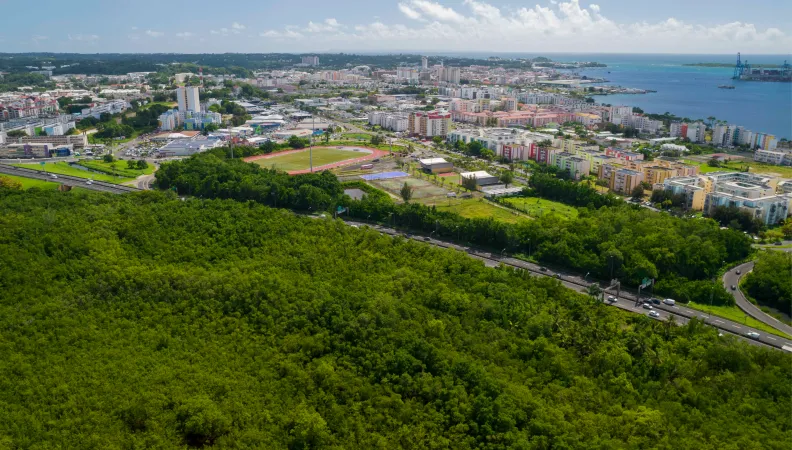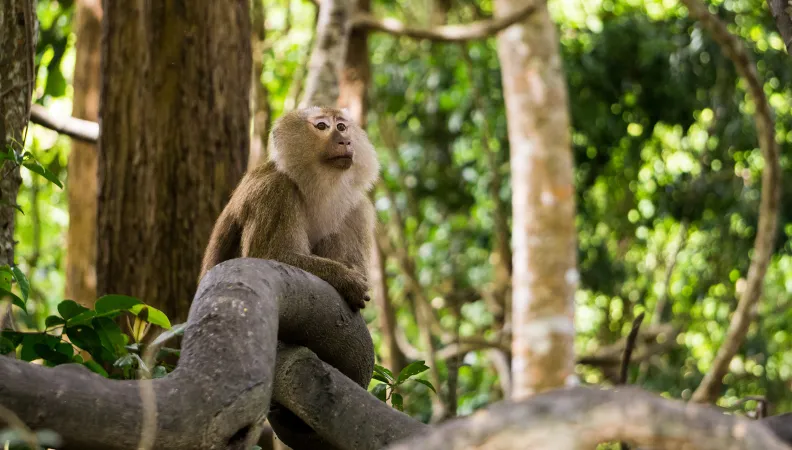 The CEROM (Comptes économiques rapides pour l'Outre-mer - Fast Economic Accounts for Overseas France) partnership brings together complementary expertise from the French National Institute of Statistics and Economic Studies (INSEE), the Monetary Issuing Institutes (IEOM/IEDOM) and Agence Française de Développement (AFD) to strengthen existing statistical information on French Overseas Territories, and, above all, to better promote it. After 20 years of existence, CEROM's work is widely known in French Overseas Territories and provides valuable support for the management of public policies.
The CEROM (Comptes économiques rapides pour l'Outre-mer - Fast Economic Accounts for Overseas France) partnership brings together complementary expertise from the French National Institute of Statistics and Economic Studies (INSEE), the Monetary Issuing Institutes (IEOM/IEDOM) and Agence Française de Développement (AFD) to strengthen existing statistical information on French Overseas Territories, and, above all, to better promote it. After 20 years of existence, CEROM's work is widely known in French Overseas Territories and provides valuable support for the management of public policies.
Context
In the early 2000s, economists and statisticians from the institutions that are part of the CEROM project realized that important and high-quality statistical information on Overseas Territories existed, but that it was relatively unknown and under-exploited.
The first priority of the partnership has been to produce rapid economic accounts. The economic accounts of year n are now available in the second half of year n+1, while, before, they were only available in year n+3. Having this information earlier facilitates the analysis and economic management of the territories concerned.
Goal
The CEROM partnership aims to improve the economic information and macroeconomic analysis capacity of the French Overseas Territories, notably through:
- The construction of economic models adapted to these territories, allowing the production of rapid accounts on the basis of existing economic accounting;
- The development of cyclical indicators giving a quick overview of economic developments;
- The promotion of economic analysis of overseas collectivities and territories, by exploiting untapped data and in order to make this analysis accessible to the greatest number (production of macroeconomic balance sheets, short-term or thematic studies);
- The construction of a peers network to exchange good practices and compare methods;
- Strengthening the quality of the economic information system by bringing together statisticians, economists and users of economic data.
This partnership has also made it possible to measure for the first time the GDP of certain overseas collectivities and to produce a fine analysis of the corporate fabrics of several territories.
Method
The CEROM partnership derives from a framework agreement renewed since 2005 between the partner institutions. This agreement sets out the objectives and modalities for implementing the partnership.
The partnership is managed by partner institutions at headquarters level, and is represented locally through their offices in seven overseas territories: the five overseas departments, French Polynesia and New Caledonia. The partnership also covers other overseas communities: Wallis and Futuna, Saint-Pierre and Miquelon, Saint-Martin and Saint-Barthélemy.
The scope of the CEROM partnership is the production of economic information and databases enabling the monitoring of overseas economies, analysis and perspective of existing macroeconomic information.
Partner institutions produce economic statistics and analyses to inform public policies. The evaluation of public policies or projects, the development of programmes and development strategies have so far been beyond the scope of CEROM’s work.
Results
Partner institutions of CEROM work together on:
- The production and publication of economic studies (macroeconomic reports, sectoral studies, etc.);
- The construction of rapid economic accounts;
- The development of cyclical dashboards.
Publications from the partnership can be found on the CEROM website (in French).
In addition, every two to three years, AFD organizes with its partners a conference devoted to socio-economic or environmental issues in Oversees France. The seventh edition of these conferences was held on October 13, 2022, and dedicated to the following theme: Overseas Territories in transitions, challenges and visions of the future.
Lessons learned
Confirming the initial diagnosis that motivated its launch, the CEROM partnership shows that important statistical socio-economic information exists in the Overseas Territories, but that it was and still remains insufficiently mobilized, especially in academic circles. The use of available statistical data sources has enabled many studies to be produced over the last twenty years. However, this work presupposes taking into account the specificities and sometimes the limits of the different data sources, whether they come from INSEE, the departmental statistical services or the monetary issuing institutes.
Contacts:
- Bertrand Savoye, research officer, AFD
- Stéphanie Margot, Head of the Strategy and Transversal Support Unit, Three Oceans Department, AFD
 This research partnership with EcoAct has allowed to enrich the notion of "standard of good ecological condition", which is central to ESGAP (Environmental Sustainability Gap), a methodology supported by AFD to assess the environmental sustainability of a given territory. This work will help prepare the continuation of the ESGAP research programme.
This research partnership with EcoAct has allowed to enrich the notion of "standard of good ecological condition", which is central to ESGAP (Environmental Sustainability Gap), a methodology supported by AFD to assess the environmental sustainability of a given territory. This work will help prepare the continuation of the ESGAP research programme.
Context
Today, the majority of leaders acknowledge the degradation of natural capital and the urgent need to protect the environment. Nevertheless, in order to define appropriate public policies, they must be able to rely on scientific standards that allow them to assess the state of a territory’s natural capital.
It remains difficult to assess this state, or even to define exactly what a "good state" of the planet should be: most existing instruments have an incomplete definition of environmental sustainability, lack of relevant indicators or fail to set appropriate targets to achieve good environmental status. There is therefore no satisfactory approach that would allow decision-makers or experts to know whether a country is moving towards environmental sustainability.
Based on a dashboard assessing the state of 23 environmental components, the ESGAP framework aims to address this need. However, the lack of appropriate standards for many essential natural capital contributions and in many countries is one of the most notable gaps identified in the ESGAP pilot projects in New Caledonia, Kenya and Vietnam.
Watch the video: How to measure the state of the planet?
Goal
This research project with EcoAct aimed to identify missing standards for several components of the Environmental Sustainability Gap (ESGAP). It discusses possible strategies to develop appropriate standards in the event that no standards are available globally.
Method
ESGAP is an innovative tool initially developed with University College London (UCL) that assesses the state of a territory’s environmental functions and their level of sustainability. For all critical components of natural capital in the territory concerned (air or water quality, pollution, forest resources, fishing resources, etc.), this indicator calculates the difference between their current state and a state that would be sustainable (that is, a state compatible with a sustainable functioning of the processes necessary for the preservation of life, human activities and well-being). This allows the calculation of an “environmental sustainability gap” (ESGAP), which highlights the path to environmental sustainability. This can then serve as a guide for public policies to estimate and preserve the natural state of a given territory.
Results
Standards have been proposed for 16 out of the 22 ESGAP indicators examined in this research project. For 8 indicators, there was not enough solid information to propose a global standard. The study identified 13 datasets available to calculate these indicators globally and provided the source and link to these publicly available databases.
Read the final report: Defining Standards of Good Ecological Condition for Computing the ESGAP in Developing Countries
Lessons learned
The next step to produce a standard of good ecological condition applicable to all countries involves, for indicators with "standards to be defined by experts" (Fairbrass, 2020), to consider who the experts might be and how to engage with them to define a globally applicable standard. This depends on the existence of a globally recognized authority (such as the World Health Organization for pollution or the Food and Agriculture Organization for fisheries), or if the indicator is developed by different teams of scientists or organizations.
Future work could also focus on examining the state of knowledge and options for setting standards from unconventional sources, such as geospatial data, big earth data, etc. The ARIES project related to the compilation of ecosystem accounts under the System of Environmental-Economic Accounting – Ecosystem Accounting (SEEA-EA) could be an interesting source for this.
Find out more about ESGAP:
- A single indicator of strong sustainability for development: Theoretical basis and practical implementation (2019)
- Monitoring the Environmental Sustainability of Countries through the Strong Environmental Sustainability Index (2022)
- Are We on the Right Path? Measuring Progress towards Environmental Sustainability in European Countries (2022)
Contact:
- Oskar Lecuyer, research officer, AFD
